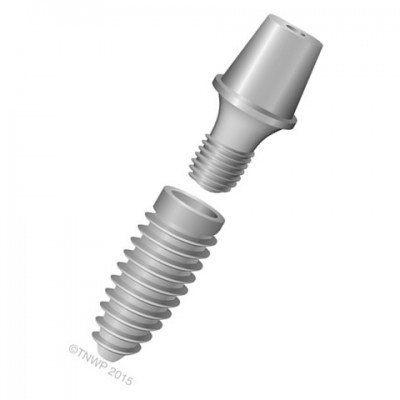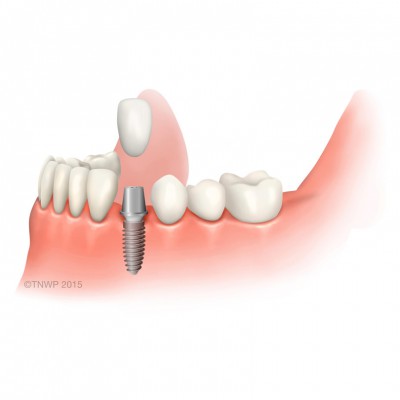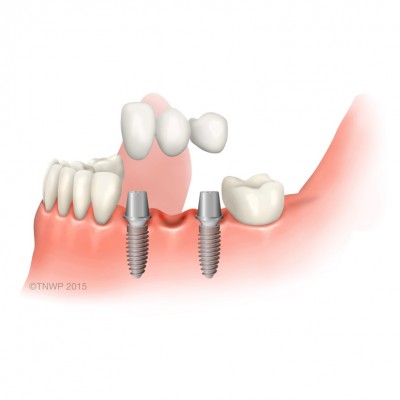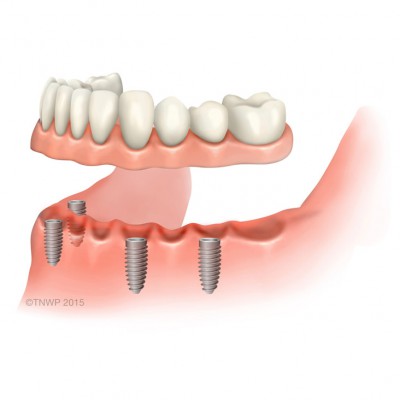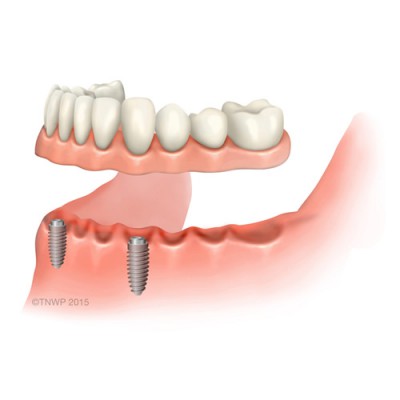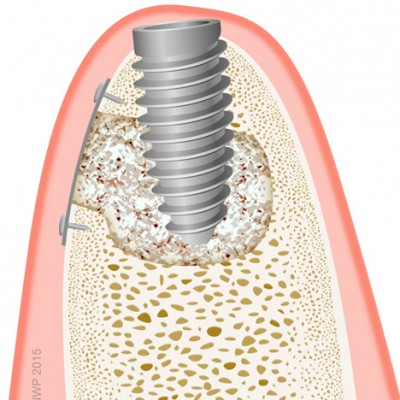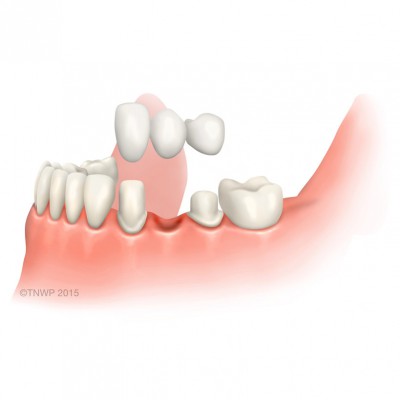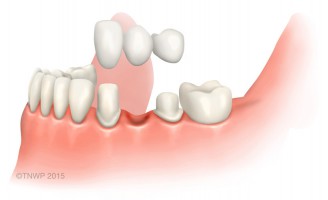
Alternatives to dental implant-supported tooth replacements
Leave a gap
- Lowest initial cost option but may be aesthetically unsightly, depending on position in the mouth
- May impair ability to chew, smile and speak normally
- Bone in the gap shrinks (withers) due to resorption by the body as a consequence of not being used, and as a result the gum drops in as well
- Bone shrinkage can contribute to instability and lateral movement of the adjacent teeth
- The opposite tooth/teeth in the other arch (jaw) will ‘erupt’ out of alignment due to the absence of masticatory (biting) force in the gap
- Teeth on either side can ‘drift’ as they are not held securely by a tooth. This can lead to food trapping and decay, this can create a ‘domino’ effect on many teeth
Conventional bridge
- Initial outlay less than an implant-supported restoration, but the bridge will need to be replaced from time to time due to wear and tear and to maintain good aesthetics
- Bridge can come loose leading to decay on the supporting teeth
- Adjacent teeth (often perfectly healthy) need to be filed down to attach the bridge
- Additional stress on supporting teeth may contribute to their early failure
- Bone shrinks beneath bridge due to lack of use, leaving an unsightly gap which can trap food
- Bone shrinkage beneath the bridge can contribute to instability of the adjacent teeth
Conventional full denture
- Initial outlay less than an implant-supported restoration
- Pressure on the gums beneath the denture reduces the blood supply which can increase the rate of bone shrinkage through resorption (withering)
- Needs to be regularly replaced or relined
- May need denture adhesive to prevent movement
- Bone shrinks beneath denture due to lack of use
- Can be uncomfortable to wear, very often poorly tolerated
- May have significantly impaired speech, chewing and confidence
- Can be embarrassing and lead to levels of low self-esteem
- Often reported as not being ‘part of one’
- Lower dentures often so uncomfortable and loose only worn as a necessity
Conventional partial denture
- Initial outlay less than an implant-supported restoration, but will require replacement from time to time
- Bone shrinks beneath denture due to lack of use
- Can impair normal speech, eating and confidence
- Fixing attachments (clasps) can damage adjacent teeth
ALWAYS DISCUSS THE TREATMENT OPTIONS FOR YOUR CASE WITH A COMPETENT DENTIST
Page compiled with assistance from Dr Dermot McNulty



